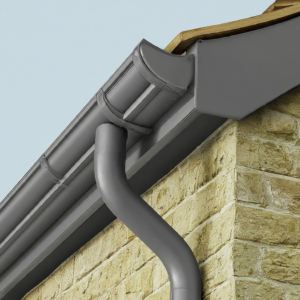
Creating a beautiful and well-organized garden is a rewarding experience for any gardening enthusiast. One way to add a personal and practical touch to your garden is by making your own engraved garden labels. These labels not only help in identifying plants but also add a charming aesthetic to your garden. In this article, we’ll guide you through the step-by-step process of making engraved garden labels on your own. Let’s dive into this fun and creative project!
The Growing Trend of DIY Garden Projects
In recent years, DIY garden projects have surged in popularity. With more people spending time at home, gardening has become a beloved hobby for many. Engraved garden labels are a small but impactful project that allows gardeners to combine creativity with functionality. These labels can be made from various materials and customized to suit any garden style.
Also Read: Design a Relaxing Retreat with Garden Furniture
Materials Needed for Engraved Garden Labels
Before you start, gather the following materials:
- Label Material: Choose from wood, metal, or plastic. Each has its own benefits. Wood offers a rustic look, metal is durable, and plastic is easy to work with.
- Engraving Tool: A handheld rotary tool, laser engraver, or wood-burning pen.
- Protective Gear: Safety glasses, gloves, and a mask to protect from dust and fumes.
- Design Templates: Printed designs or freehand sketches.
- Finishing Supplies: Sandpaper, sealant, or paint for finishing touches.
Choosing the Right Material
Wood
Wood is a popular choice for garden labels due to its natural appearance and ease of engraving. Cedar, pine, and oak are commonly used woods. Cedar is resistant to rot and insects, making it ideal for outdoor use.
Metal
Metal labels are durable and can withstand harsh weather conditions. Aluminum and stainless steel are good options. These metals are resistant to rust and corrosion, ensuring longevity.
Plastic
Plastic labels are versatile and come in various colors. They are easy to cut and engrave, making them a beginner-friendly option. Look for UV-resistant plastic to prevent fading from sun exposure.
Designing Your Labels
Freehand vs. Templates
When designing your labels, you can either draw freehand or use templates. Templates provide a consistent and professional look, while freehand designs offer a unique, personal touch.
Typography and Icons
Consider using clear, legible fonts and simple icons to identify your plants. This ensures that the labels are not only decorative but also functional.

Engraving Techniques
Using a Handheld Rotary Tool
A handheld rotary tool is a versatile option for engraving various materials. Follow these steps:
- Prepare Your Workspace: Ensure a clean, well-lit area. Secure your material to prevent movement.
- Trace Your Design: Use a pencil to lightly trace your design on the material.
- Start Engraving: Carefully follow the traced lines with the rotary tool. Use a steady hand and take breaks to avoid mistakes.
- Finishing Touches: Sand the edges and surface to smooth out any rough spots.
Laser Engraving
Laser engravers provide precise and professional results. Here’s how to use one:
- Set Up the Laser Engraver: Follow the manufacturer’s instructions for setup and safety.
- Upload Your Design: Use design software to create or upload your template.
- Engrave the Material: Place the material in the engraver and start the process. Monitor the engraving to ensure accuracy.
- Clean and Finish: Remove any residue and apply a protective sealant if necessary.
Wood Burning
Wood burning, or pyrography, is an artistic method for engraving wood. Follow these steps:
- Prepare the Wood: Sand the wood to create a smooth surface.
- Transfer the Design: Use transfer paper or draw directly on the wood.
- Burn the Design: Use a wood-burning pen to carefully trace over the design.
- Finishing Touches: Sand any rough edges and apply a sealant to protect the wood.
Interesting Article: Hank Adams – Interview | Questions Answers
Adding Finishing Touches
Sanding
After engraving, sand the edges and surface of the labels to smooth out any rough spots. This step is crucial for wooden labels to prevent splinters.
Painting and Sealing
For added durability and aesthetics, consider painting or sealing your labels. Use outdoor paint or a clear sealant to protect against weather elements.
Attaching the Labels
Attach the labels to stakes or directly to the plants. Wooden stakes or metal rods can be used to display the labels prominently in your garden.
Creative Ideas for Engraved Garden Labels
Themed Labels
Create themed labels for different sections of your garden, such as herbs, vegetables, or flowers. This adds an organized and cohesive look to your garden.
Personalized Labels
Add a personal touch by engraving family names, quotes, or garden-related puns. Personalized labels make your garden unique and inviting.
Color-Coded Labels
Use different colors for various plant types or care instructions. Color-coding helps in quickly identifying plants and their specific needs.
Maintaining Your Engraved Garden Labels
Regular Cleaning
Clean the labels regularly to prevent dirt and grime buildup. Use a soft cloth and mild detergent to wipe the surfaces.
Seasonal Maintenance
Check the labels at the beginning and end of each gardening season. Reapply sealant or paint if necessary to maintain their appearance and durability.
Benefits of DIY Engraved Garden Labels
Cost-Effective
Making your own garden labels is more cost-effective than buying pre-made ones. It allows you to customize the size, design, and material to fit your budget and preferences.
Customization
DIY labels offer endless customization options. You can experiment with different designs, fonts, and materials to create labels that reflect your personal style.
Sense of Accomplishment
Creating your own garden labels is a fulfilling project that adds a personal touch to your garden. It provides a sense of accomplishment and pride in your gardening efforts.
Expert Tips for Perfect Engraving
Practice Makes Perfect
If you’re new to engraving, practice on scrap pieces of your chosen material before starting on the final labels. This helps you get comfortable with the tools and techniques.
Use Proper Lighting
Good lighting is essential for detailed work like engraving. Ensure your workspace is well-lit to avoid mistakes and ensure precision.
Take Breaks
Engraving can be time-consuming and requires focus. Take regular breaks to rest your hands and eyes, reducing the risk of errors.

Inspirational Examples from Gardeners
Community Garden Projects
Many community gardens have embraced the DIY trend, creating custom engraved labels for their plots. These projects foster a sense of community and collaboration among gardeners.
Home Gardens
Home gardeners have shared their creative label designs on social media, inspiring others to try their hand at DIY engraving. From whimsical designs to elegant calligraphy, the possibilities are endless.
Conclusion
Creating your own engraved garden labels is a rewarding and creative project that enhances the beauty and organization of your garden. Whether you choose wood, metal, or plastic, the process is straightforward and enjoyable. With the right tools and a bit of practice, you can make unique and personalized labels that reflect your gardening style. So, gather your materials, unleash your creativity, and start engraving your way to a beautifully labeled garden!



